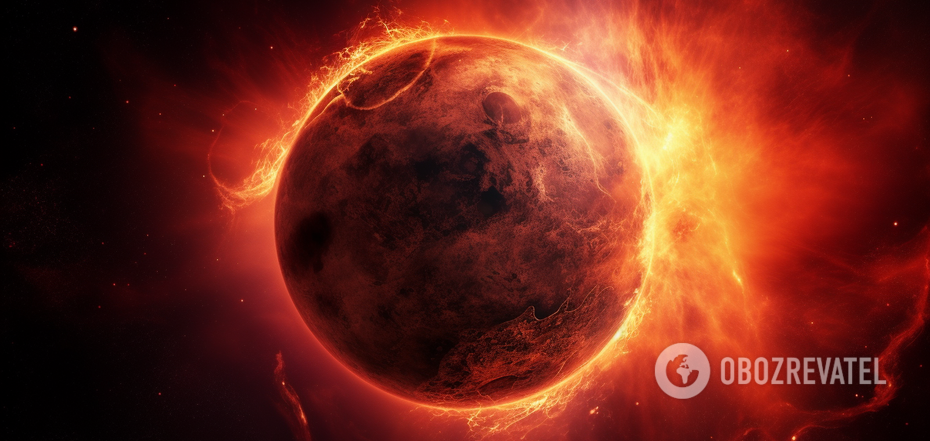Life
A 19th century mathematician found the planet Vulcan in the vicinity of the Sun: why and how it disappeared
In the 19th century, French mathematician and astronomer Urbain Leverrier discovered that there should exist a planet unknown to mankind near the Sun, which he called Vulcan. Its existence was believed for more than 70 years, until it was "destroyed" by Albert Einstein.
About the fantastic discovery tells the publication IFL-Science. "Discovery" of Vulcan was preceded by another discovery of a mathematician, which, unlike the planet near the Sun, turned out to be quite accurate.
In 1846, Leverrier investigated Uranus and discovered that it was moving in a somewhat unexpected way. It turned out that there was a discrepancy between how Uranus was supposed to move according to Newtonian physics and what its orbit actually was.
Leverrier performed calculations and suggested that Uranus' orbit would be logical if there was another previously unknown planet nearby that was influencing it.
Since the mathematical calculations satisfied the scientist's curiosity, he didn't bother to find the planet with a telescope, but he talked about his theory. The German astronomer Johann Gottfried Halle became interested in it. In September 1846, he began a study as a result of which he found that within 1 degree of the point about which Leverrier said there really is a celestial body. It turned out to be the planet Neptune.
Some time later Leverrier began to explore one of the most difficult planets in the solar system to see - Mercury, which is the first planet from the Sun. Leverrier was tasked with constructing Mercury's orbit using Newtonian physics.
It turned out that Mercury's orbit again did not fit into the laws of physics and, in principle, made no sense. Newtonian theory assumed that the planets move in elliptical orbits around the Sun. Observations showed that Mercury's orbit fluctuated more than could be explained by the gravitational force of the other known planets.
Turning to logic, the scientist hypothesized that, as in the case of Uranus, Mercury was influenced by another planet that was apparently even closer to the Sun.
He eventually named the planet after the Roman god of fire, Vulcan.
In 1859, French physician and amateur astronomer Edmond Modest Lescarbeau reported that he had used Leverrier's calculations and had indeed discovered Vulcan. He reported this to a mathematician and the latter calculated what Vulcan's orbit should be in relation to the Sun. According to Leverrier, the planet would orbit the Sun two to four times a year.
Subsequently, other scientists began to report that they had probably seen Vulcan. Some of them actually saw dark sunspots, while others were simply mistaken. So officially no one except Lescarbo claimed to have seen the planet.
Despite this, the planet continued to be discussed for almost 70 years, and in 1879 the newspapers even announced its passage past the Sun. Of course, Vulcan never appeared.
Perhaps the "discovered" Leverrier planet would still be an amazing mystery if Albert Einstein and his general theory of relativity had not appeared and simply "destroyed" Vulcan.
Einstein's theory was able to predict Mercury's orbit without additional planets. The theory suggests that massive objects (such as our Sun) exert a gravitational influence on other objects (all planets and other cosmic bodies) and the closer an object is, the more significant the influence it will experience.
Thus, the theory of relativity was able to explain Mercury's orbit and Vulcan simply ceased to exist.
Earlier OBOZREVATEL told that it is the gravitational influence may indicate that there is a Planet X in the solar system.
Subscribe to OBOZREVATEL channels in Telegram and Viber to keep up with the latest news.



























